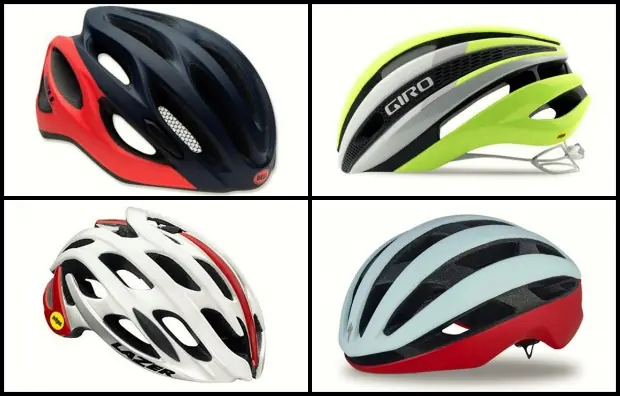
One of the growing trends in the past couple years is the inclusion of MIPS (Multi-directional Impact Protection System) technology in helmet designs. While the actual technology and research behind its creation flies over the heads of most, the idea is relatively simple: to provide cyclists with an extra layer of protection in certain types of crashes.
As is the case with any new technology, you can expect to pay a pretty penny to become an early convert. For instance, Lazer's top-of-the-line Z1 is priced at $270, while the same Z1 helmet with MIPS technology is $310—and at first glance, the two slightly different models don't seem all that different.
If you're pondering whether or not it's worth forking out the extra dough—or you've completely dismissed the new technology altogether—it's important to first learn what MIPS is and whether it will protect you more than a standard helmet.
MIPS Explained
Developed by the Royal Institute of Technology in Stockholm, Sweden, scientists have studied MIPS technology for over 19 years. During their research, scientists found that—while standard helmets do help reduce impact forces during a crash—the previous tests only looked at direct impact forces, not those occurring at angles.
Because most cycling crashes that involve head impact occur at angles, these researchers found that reducing the force that occurs during a side impact collision would significantly reduce the risk of concussions and other significant head injuries associated with cycling accidents.
The MIPS concept revolves around the slip plane concept, which uses two layers inside the helmet instead of the single layer found in most standard helmets. This allows the head to rotate slightly inside the helmet upon impact—reducing the rotational force to the brain that typically occurs during a crash.
What Does the Technology Look Like?
While it can vary slightly from company to company, the foam material inside most helmets that absorbs impact forces is pretty standard. Helmets which include MIPS technology have added a thin, second layer inside the helmet.
This layer is made of a polycarbonate plastic and coated with Teflon and sits directly beneath your standard helmet liner. While you'll be able to move it slightly inside the helmet, it won't really work until an impact occurs. This is because a pin holds the MIPS layer in place, and when an impact occurs, will slip approximately 15mm—which the company claims can greatly reduce the amount of force absorbed by your brain.
You'll notice a thin yellow plastic layer when looking inside your helmet shell, but it won't feel that much different from other standard helmets. The design features cutouts to match each of your air vents to keep you just as cool as you'd be without the liner. It also won't do anything noticeable to the overall weight of the helmet and should feel just as comfortable as any other cycling helmet.
New Helmets with MIPS
Let's face it; cycling can be a dangerous sport If you ride long enough, chances are you're going to crash. While making smart decisions and remaining mindful of traffic laws will go a long way in keeping you safe, there are times when you can't avoid an accident.
When this time comes, you'll want to protect yourself as much as possible. And you can't put a price on preventing a significant brain injury—no matter which way you slice it.
Below are some of the latest helmets equipped with and without MIPS technology.











Discuss This Article